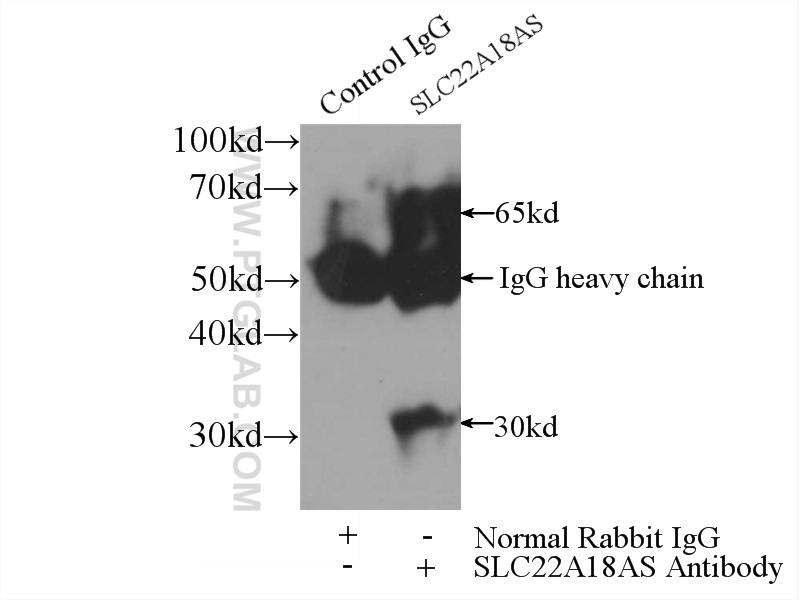验证数据展示
经过测试的应用
| Positive IP detected in | HepG2 cells |
推荐稀释比
| 应用 | 推荐稀释比 |
|---|---|
| Immunoprecipitation (IP) | IP : 0.5-4.0 ug for 1.0-3.0 mg of total protein lysate |
| It is recommended that this reagent should be titrated in each testing system to obtain optimal results. | |
| Sample-dependent, Check data in validation data gallery. | |
产品信息
13475-1-AP targets SLC22A18AS in IP, ELISA applications and shows reactivity with human samples.
| 经测试应用 | IP, ELISA Application Description |
| 经测试反应性 | human |
| 免疫原 | SLC22A18AS fusion protein Ag4274 种属同源性预测 |
| 宿主/亚型 | Rabbit / IgG |
| 抗体类别 | Polyclonal |
| 产品类型 | Antibody |
| 全称 | solute carrier family 22 (organic cation transporter), member 18 antisense |
| 别名 | BWR1B, BWSCR1B, ORCTL2S, p27 BWR1B, SLC22A18AS, SLC22A1LS |
| 计算分子量 | 253 aa, 27 kDa |
| 观测分子量 | 30 kDa, 65 kDa |
| GenBank蛋白编号 | BC030237 |
| 基因名称 | SLC22A18AS |
| Gene ID (NCBI) | 5003 |
| RRID | AB_2877953 |
| 偶联类型 | Unconjugated |
| 形式 | Liquid |
| 纯化方式 | Antigen affinity purification |
| UNIPROT ID | Q8N1D0 |
| 储存缓冲液 | PBS with 0.02% sodium azide and 50% glycerol , pH 7.3 |
| 储存条件 | Store at -20°C. Stable for one year after shipment. Aliquoting is unnecessary for -20oC storage. |
背景介绍
The SLC22A18/SLC22A18AS genes are a sense-antisense pair located at human chromosome segment 11p15.5. These genes are paternally imprinted: paternal alleles are silenced and maternal alleles are expressed. SLC22A18AS (antisense) is associated to SLC22A18 (sense). These two genes share, in divergent orientations, 31 bp in their 5′ regions (between the first exon of SLC22A18AS and the second exon of SLC22A18). This antibody recognizes SLC22A18AS only.
实验方案
| Product Specific Protocols | |
|---|---|
| IP protocol for SLC22A18AS antibody 13475-1-AP | Download protocol |
| Standard Protocols | |
|---|---|
| Click here to view our Standard Protocols |
